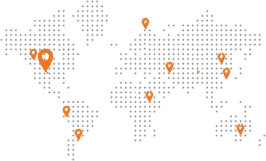Mining Engineering, July 1997
Authors: J. F. T. Agapito and R. R. Goodrich (AAI) and M. Moon (Energy West Mining Co.)
Experience at Energy West Mines in the Wasatch Plateau Coal Field, Utah, has shown that longwall face bursts occur mostly near the tailgate when extracting the third adjacent longwall in a panel section where depths exceed 610 m (2000 ft). It is believed that this is due to a combination of cover depth and side abutment stresses created by the widening of a pressure arch formed by interlocking and bridging of large blocks of very competent strata. The 60-m-thick (200-ft-thick) Castlegate Sandstone probably plays a key role in pressure arching. This paper presents a back-analysis of the location and magnitude of the stresses associated with face bursts that occurred when mining the 7th Right Longwall at the Deer Creek Mine. Improvement of these conditions may be achieved by widening the longwalls to attain critical subsidence width sooner while mining the second longwall, and to reduce stresses at the face. Wider longwall faces, however, increase the chance of sandstone channel interception often associated with bursts. Satisfactory mitigation of face bursts beyond cover depths of 610 to 670 m (2000 to 2200 ft) may be difficult without using destressing techniques. The hydraulic fracturing/liquid infusion technique seems to offer the best possibilities for application in longwall mining.
Downloadable PDF: Dealing with Coal Bursts at Deer Creek




